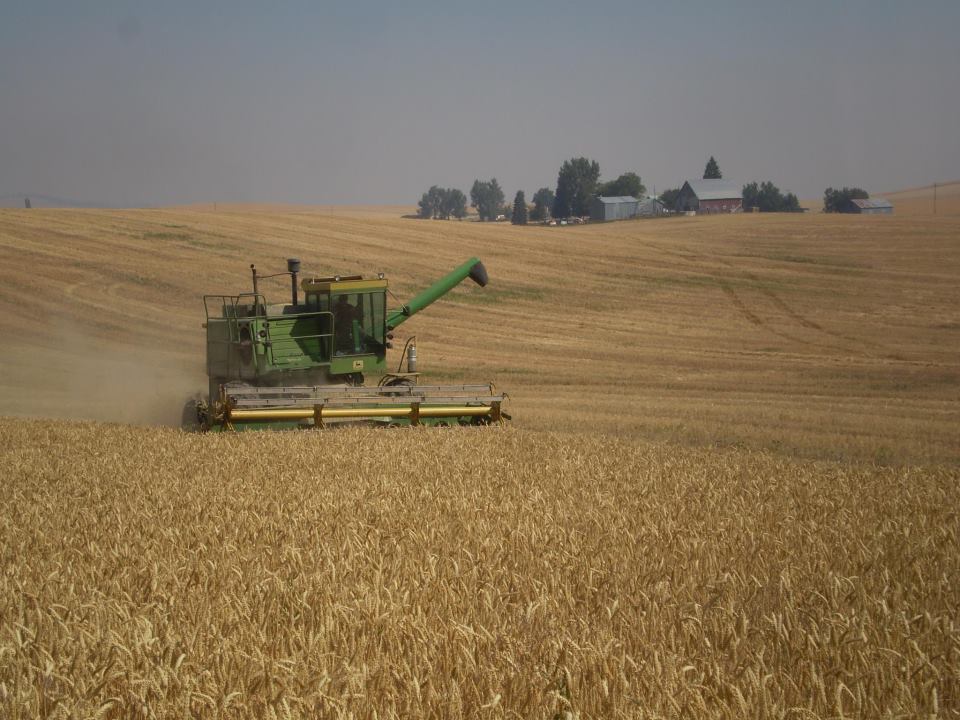Farmland preservation laws are based on myths

As communities across Washington and the country fear the demise of local farming, special interest groups push for stronger farmland preservation laws in the name of protecting these farms. However, these laws prioritize acreage over farmers, are costly and provide little to no benefit to farmers, and are based on many myths and exaggerations to justify the laws existence.
- Myth #1: Farmland is disappearing at an alarming rate – Multiple groups cite statistics claiming the rate of farmland disappearance is alarming, with one group saying we lose 40 acres of farmland every hour. Some perspective helps put this into context. It is true that some open space and farmland is being developed, but from 2007 to 2012 the US experienced a net increase of cropland acreage of 4 million acres, which is a 1% gain.
- Myth #2: Converted farmland is always to development – Farmers choose to convert their land to its highest and most beneficial purpose. Of the 7 million cropland acres converted between 2007 and 2012, 66 percent were transferred back to pasture, 11 percent was moved into the federal government’s Conservation Reserve Program for marginal land, and 3 percent was converted to forests. Only 10 percent of cropland over the five years was converted to development. These statistics fail to mention that of the cropland gains from 2007 to 2012, 1 percent of the land converted to cropland came from developed land.
- Myth #3: Farmland protection laws are needed to protect local food security – Forgetting that most of our products are transported from the areas with a competitive advantage, advocates of land-use planning laws argue we need “food security.” This is a naïve view because according to Todd Myers, WPC’s Environmental Director “It’s better to grow food efficiently and ship it to the consumer than to grow food inefficiently where the consumer lives.”
- Myth #4: Farmland protection are effective at keeping land in agriculture – Markets, not government programs, influence how land is ultimately used. In Washington, most of our 15.1 million farmed acres are not zoned explicitly for agricultural use, illustrating the lack of influence GMA has on the protection of productive and commercially viable farmland. Even the farmland protection group, American Farmland Trust said, “There seems to be little hope that Washington’s Growth Management Law can prevent the fragmentation of our land base.”
- Myth #5: Farmland protection laws benefit farm families – For farm families, land ownership is the primary risk management tool available to their operations. It constitutes their retirement plan, medical insurance, business collateral, college student savings, and more. Land-use planning laws, like GMA, unfairly reduce the value of their agricultural lands by precluding other uses for the land, removing much of its value. Within Pierce County, agricultural land values increased 47.3% from 2002 to 2012. Some estimates value land in Pierce County as low as $50,000 to as high as $1 million per acre. Increasing the number of Agricultural Resource Land (ARL) acres will zone more farmland into lower value categories, effectively removing a portion of the value from farm families. In fact, farmers will often sell higher valued land and use the resulting profit to expand their farming operation.
- Myth #6: Farmland protection laws protect the farmer – Farmland protection laws focus on acreage not the actual challenges to a commercially viable agricultural industry. Excessive and costly regulations and low access to supporting industries make it difficult for farmers to stay in business. Reclassifying does nothing to remove these barriers to a successful agricultural economy, instead they hurt the farmers by taking value from their lands. It would be better and more beneficial to focus on strengthening the industry by removing costly regulations instead of adding yet another level of costly and ineffective laws to the lives of farm families.
We love the idyllic scenes provided by open space and farmland and from first glance would love to protect this unquantifiable value to our communities. However, laws designed to protect this space are costly to the farmers and no one is paying reimburses them for their sacrifice.
Advocates cite King County as an example of poor farmland protection, where 12 acres of farmland were sold to a developer for $4.5 million to build a subdivision. To put this in perspective, 12-acres of agricultural land in King County would average $6,156 in market value production per acre, which is $73,878 for the entire 12-acre operation. At a purchase price of $4.5 million, it would take over 60 years to gain the equivalent return from agricultural production.
Will the county make up that loss for the family? Who will pay the difference? Will you pay the farm family for their sacrifice so you can look at 12-acres of farmland as you drive by? Regulation in the name of protecting farmland is another example of a policy that does more harm than good to the people it purports to help.
For more information please refer to the full Policy Brief: Farmland preservation laws do more harm than good for farm families at Washington Policy Center’s website.





